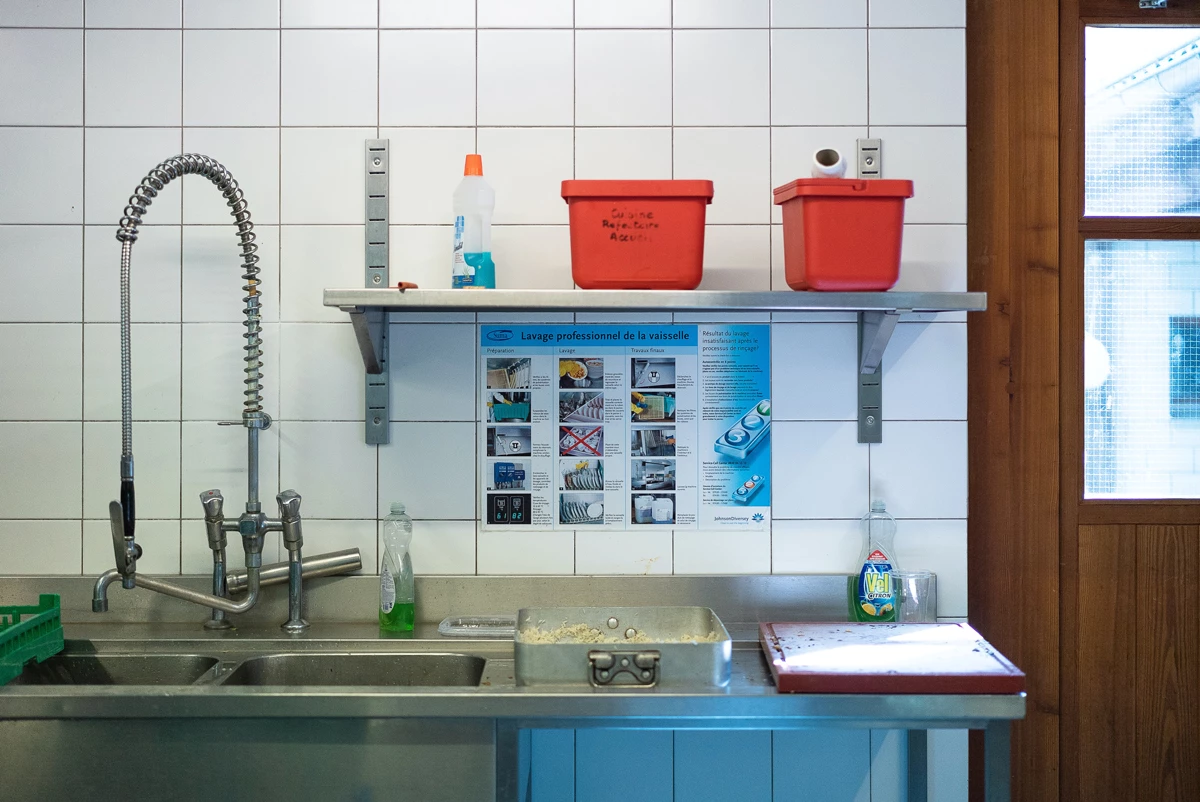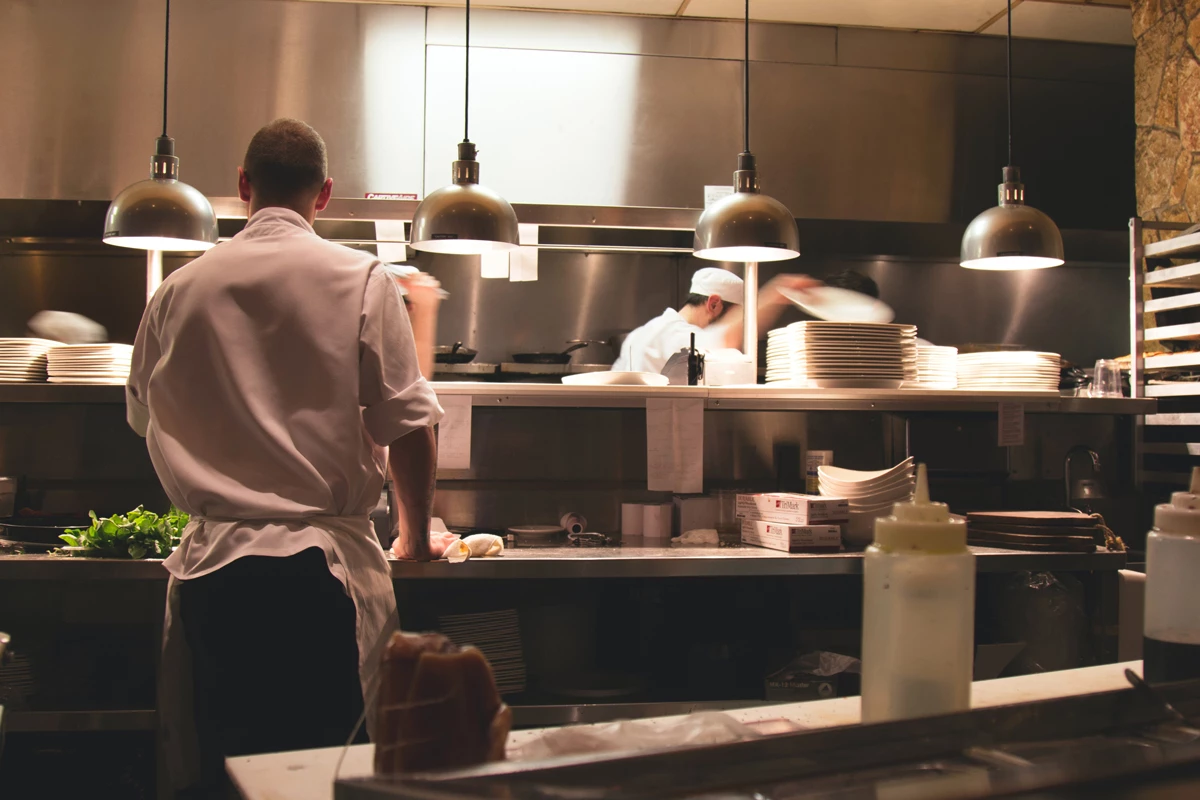24/07/2020 | Category: Commercial Insurance

If you’re a food business, the Food Hygiene Rating Scheme should be a big deal. With more than two thirds (68%) of consumers choosing where they will buy food from based on a venue’s food hygiene rating, getting a high score is clearly a major factor in building a successful business.
According to the findings from the Food Standards Agency (FSA), an overwhelming 83% of consumers want food businesses to have their food hygiene ratings on display, with over more than half (59%) of respondents assuming that restaurants, bars or pubs who do not publicly display their rating have a poor standard of hygiene.
One of five (21%) of those surveyed admitted to completely avoiding venues where hygiene is rated as poor.
So, if you’ve not yet got to grips with the Food Hygiene Rating Scheme, now is definitely the time to do so. The commercial benefits can extend to not having to claim on your commercial insurance policy as often for incidents relating to hygiene – for instance, in cases of food poisoning among customers.
In this article we’ll attempt to answer all your questions relating to the Food Hygiene Rating Scheme, including things like:
- What is the Food Hygiene Rating Scheme?
- What businesses are exempt from the scheme?
- What do the different ratings mean?
- Can you appeal a rating if you don’t agree with it?
- Where are the ratings published?
- Do you have to display your food hygiene rating on your premises?
- Why is the Food Hygiene Rating Scheme Brand Standard important?
By the end of it, we hope you can start to take the steps necessary to secure a top rating, thus minimising the risk you pose to consumers and increasing your venue’s appeal. Let’s kick things off by summarising the Food Hygiene Rating Scheme.
What is the Food Hygiene Rating Scheme?
Launched in 2010, the government-led scheme was introduced to help consumers make informed decisions about where to eat or shop for food by providing information about hygiene standards found in businesses at the time of routine inspections by local authorities.
The scheme covers businesses in England, Wales and Northern Ireland supplying or serving food directly to consumers. This includes restaurants, pubs, cafés, takeaways and hotels, as well as supermarkets and other food shops. In Scotland, there’s a similar system called the Food Hygiene Information Scheme.
Businesses are rated according to a set number of points which include:
- handling of food
- how food is stored
- how food is prepared
- cleanliness of facilities
- how food safety is managed
The scheme does not take into account the following factors:
- quality of the food
- customer service
- culinary skill
- presentation
- comfort
So, if businesses want to secure a higher rating, they need to ensure their processes, training and systems are geared up to ensure good hygiene is maintained, as well make sure food is being handled and prepared in the most hygienic way possible.
What businesses are exempt from the scheme?
Not all businesses that sell food have to be inspected for a food hygiene rating. If your business fits into one of the two categories below, you can bypass the scheme:
· firms that are low risk to public health, like newsagents, chemists or visitor centres selling pre-wrapped products that don’t need refrigeration
· childminders and businesses that offer caring services at home
If you’re unsure, it’s best that you speak to your local authority who will be able to inform you whether or not you should expect a visit from the food safety officer.
What do the different ratings mean?
Once an inspection has been completed, your business will be given a rating between one and five.
Accompanying the rating will be a description of what it means – for example, a 0 rating means that urgent improvement is necessary.
Here’s a rundown of what all the different ratings mean (Note: the more points, the more issues the inspector has found):
Food hygiene rating - 0
This means that urgent improvement is necessary. Receiving a 0 means that your business scored more than 50 points and multiple problems need to be addressed.
Food hygiene rating - 1
This rating means that major improvements are necessary. A firm will receive a 1 rating if they score between 45 and 50 points.
Food hygiene rating - 2
This score means that improvements are necessary. A 2 is given to a food business that scores between 35 and 40 points.
Food hygiene rating - 3
This means that the business was found to be generally satisfactory. Firms will receive a 3 if they score between 25 and 30 and their practices are generally good for maintaining safety standards.
Food hygiene rating - 4
Achieving a 4 rating means that the inspector thought the business was good on assessment. Receiving a 4 means your business scored a total of 20 points.
Food hygiene rating - 5
This rating means that the business was seen as very good by the inspector. Businesses who score between 0 and 15 will receive a 5, which testifies that they uphold excellent hygiene standards in their premises. All businesses should aim to attain and retain a top rating.
Within two weeks of an inspection taking place, you will receive a formal written assessment of how the inspector came to their rating. This is intended to help you improve or maintain standards. This inspection report can be requested by anybody via the FSA website.
The local authority will consider all requests and will usually send out a copy of the report. In some cases, the local authority may decide that they cannot do so but they must give a valid reason to explain why that is.
Can you appeal a rating?
If you’re not happy with a rating, you can make an appeal – once you’ve understood how the food safety officer came to their decision – to the local authority. You’ll find details on how to appeal in the letter that confirms your rating.
You also have a ‘right to reply’, in which you can inform your customers how you have improved your hygiene standards or if there were any unusual circumstances at the time of the inspection. Your local authority is obliged to publish this online on their website, alongside the rating that was given.
Once you’ve addressed the issues highlighted in your inspection report, you can request that the food safety officer pays you another visit to get a new rating. It’s likely that there will be a charge incurred for a revisit inspection but if your rating increases, it may well be worth it in the long run.
Where are the ratings published?
Once an inspection has been completed, the rating that the food safety officer has settled on will be uploaded by the local authority so that it is published on the food hygiene ratings website.
Ratings of 5 will be published immediately (or as soon as the information is uploaded by your local authority). Ratings of 0 – 4 will be published a month after the date of inspection to allow for an appeal to be submitted by the businesses it concerns.
If you’re based in England or Wales, you can request that a rating is published before the end of the appeal period. This request must be made in writing to your local authority and must include:
· details of who you are
· the name and address of the business
· your contact information
· the date of the inspection
· the rating given
The local authority will consider the request and, if there’s no obvious reason why it shouldn't, will usually publish the rating early. You might wish to request that a rating is published early if, for example, you achieve a rating of 4 (good on assessment) or you want to give consumers quick access to this information.
Once your rating has been published by the local authority, it will also be available for public consumption on the Scores on the Doors website. The website is designed to allow consumers to quickly check the food hygiene rating of pubs, restaurants, and food shops in their area.
Do you have to display your food hygiene rating?
Once you’ve been given your rating, your local authority will issue you with the appropriate sticker and certificate. In England, you don’t have to display a rating or certificate for your customers to see – but there are clear benefits from doing so, if you have been awarded a top rating.
In the FSA’s latest survey into how many businesses display their ratings stickers so that they’re visible from outside the premises, it found that less than half (49%) do so. In contrast, in Wales and Northern Ireland respectively, 84% and 82% of firms put their sticker on display.
In Wales and Northern Ireland, it is a legal requirement that businesses display their certificates in a prominent place like the front door or in a window.
Around a third of establishments in each country say that displaying their rating has had a positive impact upon their business (31% in England, 39% in Northern Ireland and 35% in Wales).
But, curiously, only slightly more than two-thirds (67%) of those with a rating of 5 were found to be displaying their rating. Slightly less surprisingly, only 28% of those that have a rating of 0-3 are making their score known.
How can you make the most of your rating?
As we’ve highlighted, there’s a clear incentive to make the most of a good hygiene rating. But the research shows that not all businesses are doing so.
One way to profit from a good rating is by including it in promotional activity and materials.
The FSA provides a number of resources which can be downloaded from its website based around its imagery e.g. logos, stickers, posters, leaflets and web banners. However, all imagery must be used in line with the following principles:
· It should not be altered or amended without the FSA’s prior permission.
· The FSA’s logo is integral in the design of the stickers and may be used in this context but permission must be sought from the FSA before using its logo in any other context
· The use of the FHRS branding in promotional materials should not be seen as or portrayed as the FSA’s endorsement of any individual food business, chain of food businesses, website or online application.
· Should the rating of any food business be upgraded or downgraded at a subsequent inspection, the images being used should be updated or removed from any promotional materials in which they were featured, for example, menus or websites.
The FSA provides a selection of food hygiene rating badges to display on your online digital services, including on websites, apps, social media and emails.
The badge will automatically update if a rating or inspection result changes – so, if you go from a 3 to a 5, your customers visiting your website or Facebook page will be able to see that.
Why is the Food Hygiene Rating Scheme Brand Standard important?
You might hear the FSA talk about ‘Brand Standard’. The Brand Standard is a guiding document for local authorities to ensure they’re implementing and operating the scheme consistently.
In other words, ensuring that all food businesses across the UK are being judged by the same standards. It’s crucial for fairness; ensuring that businesses don’t feel hard done by.
What commercial insurance do you need?
Ensuring you have the right insurance can sometimes be tricky. That’s why we can arrange bespoke commercial insurance for your business, tailoring the policy to your specific requirements.
Pub and Restaurant insurance products can include:
· Buildings, content and stock including frozen food
· Loss of licence
· Food poisoning cover
· Fixtures and fittings
· Cover for loss of profits from business interruptions
· Cover for Public and Employers’ liability
Why choose Insurance Choice?
At Insurance Choice, we’ve been arranging low-cost, high-value insurance for over 20 years, specialising in tailoring commercial insurance policies to meet your individual or business’ requirements.
We can also offer flexible payment solutions, including spreading the cost of your insurance in monthly installments.
Get a quote for commercial insurance today – simply call 01384 429900 now.
